When designer Arne Maynard was invited to advise the owners on what to do with this walled garden area, he found overgrown apples trees in a carpet of couch grass and bindweed, and four vast beds divided by an intersecting pair of paths.
You may also like
- A rose-filled garden in West Sussex from Arne Maynard
- Topiary and Corten steel at a small north London garden
- Rare tulips grown by Arne Maynard
"I felt there was much that was fundamentally right and didn't want to disturb the basic layout, but the beds were far too big to manage effectively, so I looked at ways of subdividing each quarter into manageable spaces," says Arne.
In brief
What Private family garden Where West Sussex
Size 85 x 110m walled garden
Soil Part green sand, part sandy loam
Climate In a frost pocket
Hardiness rating USDA 8
Stripped of the distracting froth of summer planting, the structure he developed is an ornamental feature in its own right – traditional yet modern, like a monochrome Mondrian. Three of the large quadrants have been subdivided by secondary paths to create space for raised vegetable beds, soft fruits and flowers to cut for the house. As you would expect in a garden designed by Arne, everything is quietly beautiful, including such practical elements as the oak posts and parallel bars that support raspberries, blackberries and fan-trained cherries. The fourth quadrant has been reimagined as a picnic area, with a sunken central lawn reached by a gently spiralling path.
Garden tour
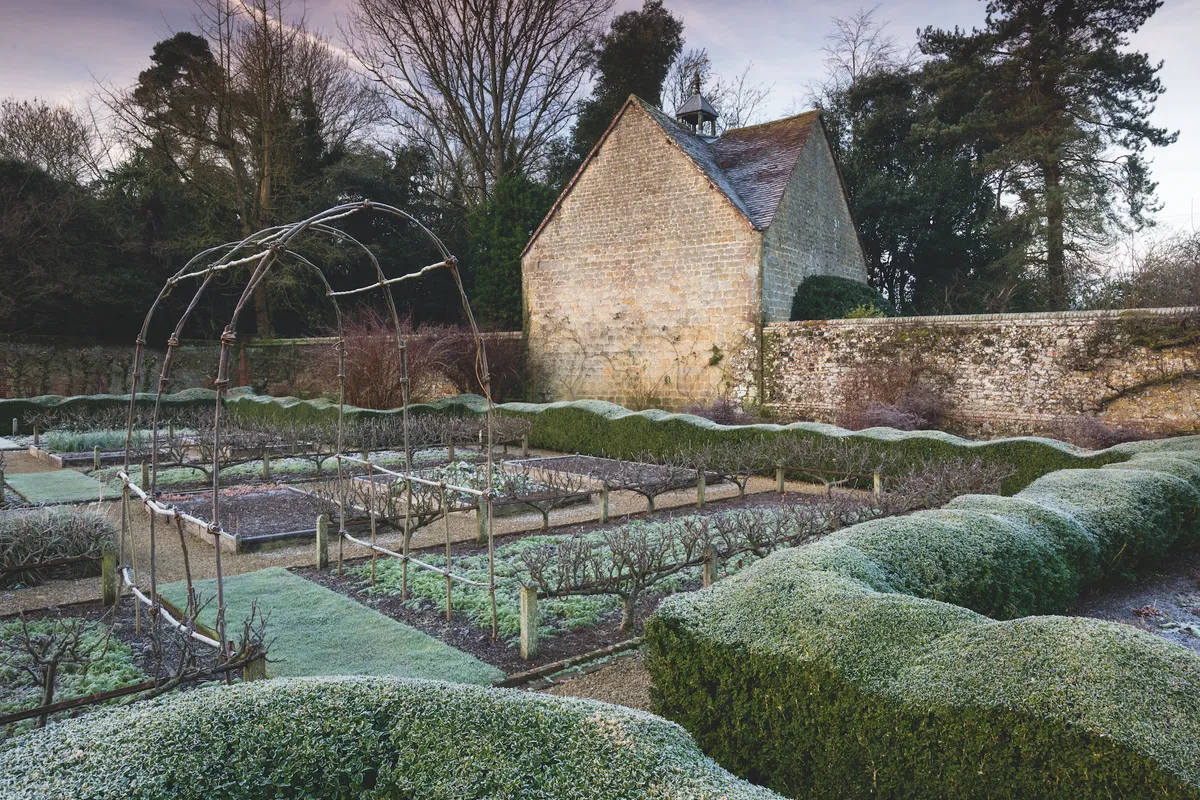
In summer, every inch of soil is hidden by vegetables, fruit and flowers for cutting; only in winter can the true layout and skilled husbandry be fully appreciated.
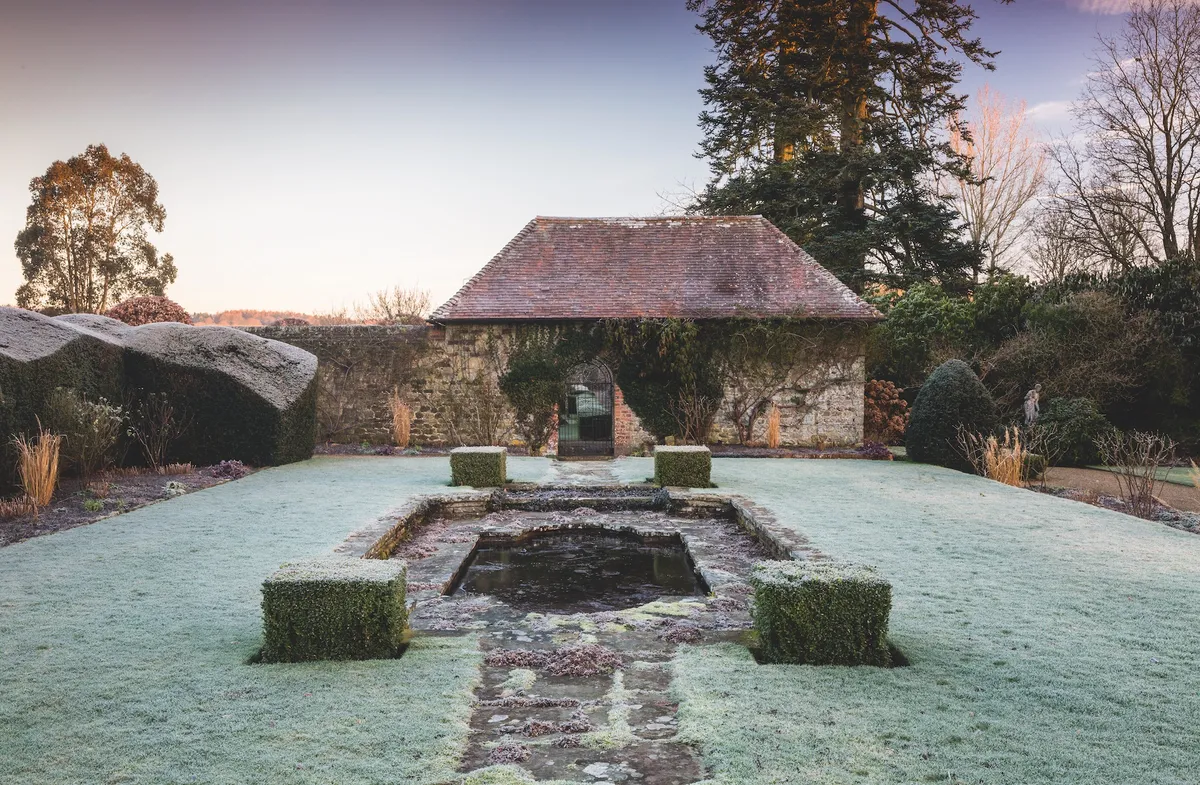
Outside the walled garden, a stone-edged pool provides a quiet counterpoint to the intense planting inside the walls.
At this quietest time of year, with the layers stripped back, its strong structure rewards careful scrutiny
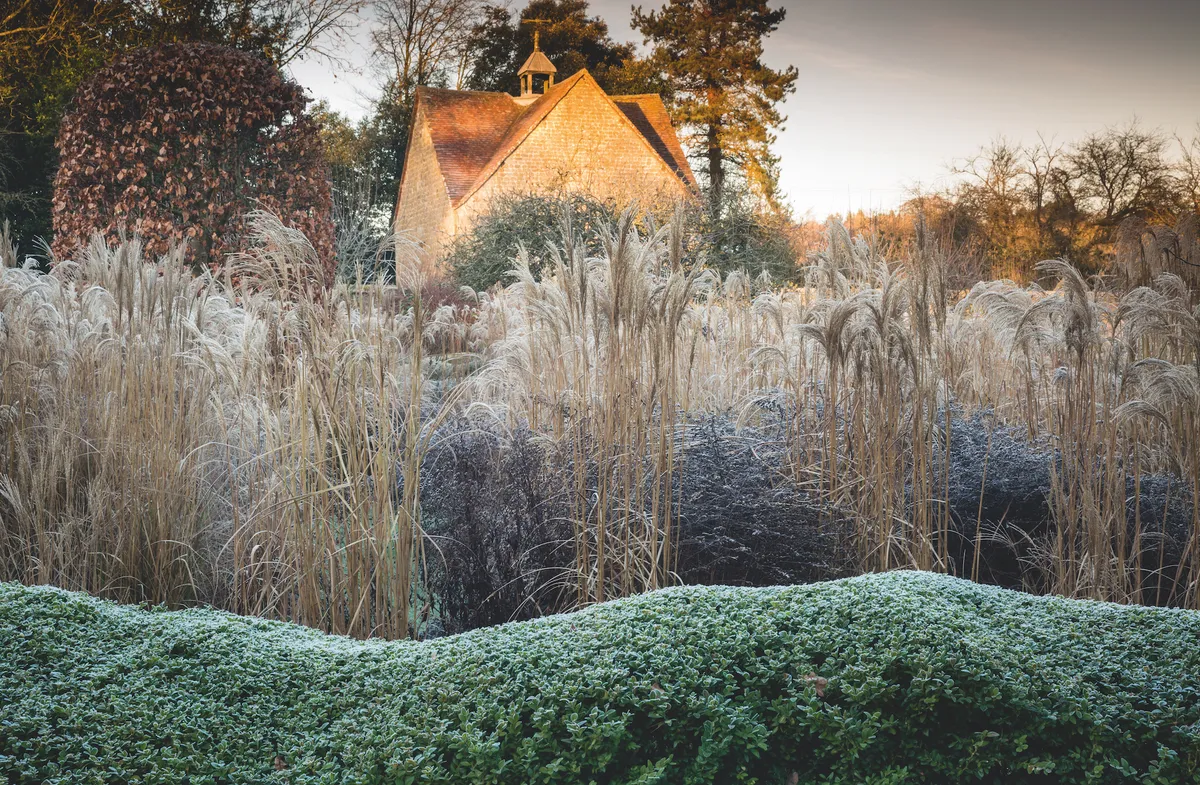
One quadrant of the garden is given over to an ornamental grass spiral that offers a gentle contrast to the more formal box hedge. In summer it conceals a picnic spot, and in winter is a beautiful contemporary tapestry.

Cloud-pruned Buxus sempervirens hedges provide a sculptural element.
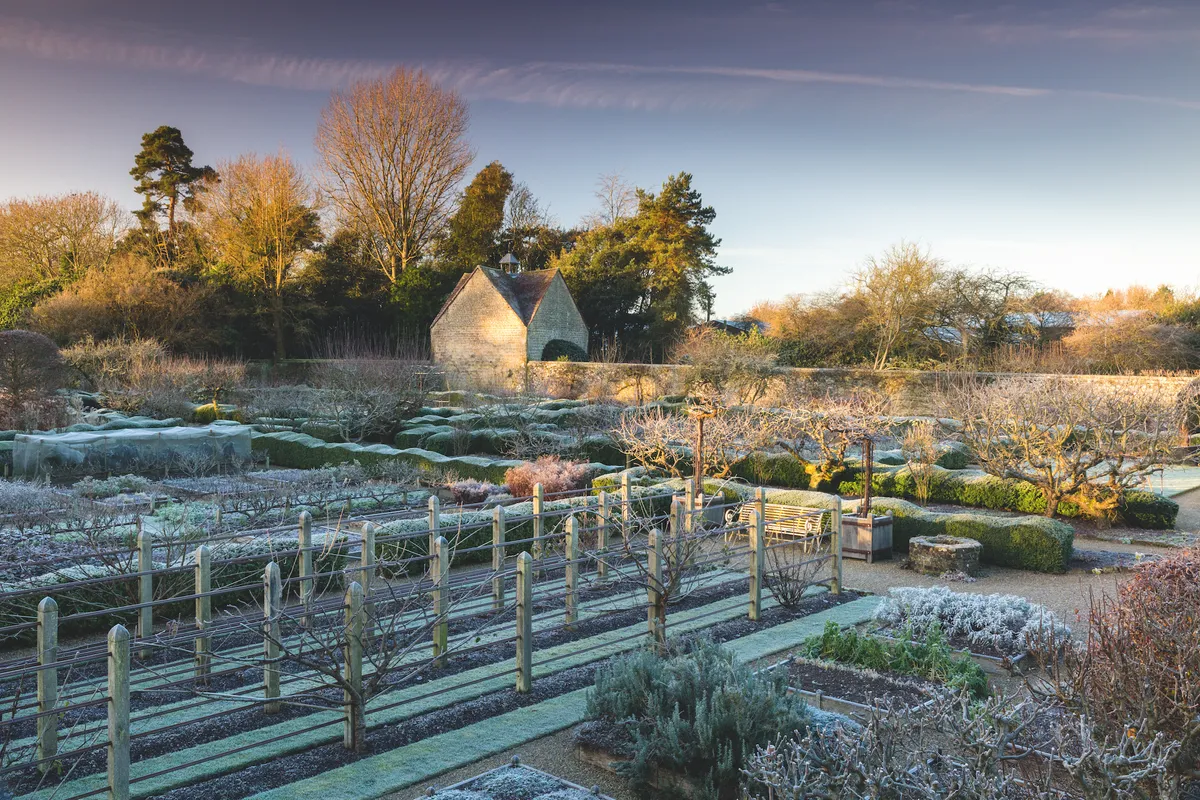
Demonstrating that there is great beauty in utility, the winter framework of trained fruit trees, timber-edged beds and robust training posts is easy to appreciate.
Gloriously gnarled apple trees speak of the history of the place
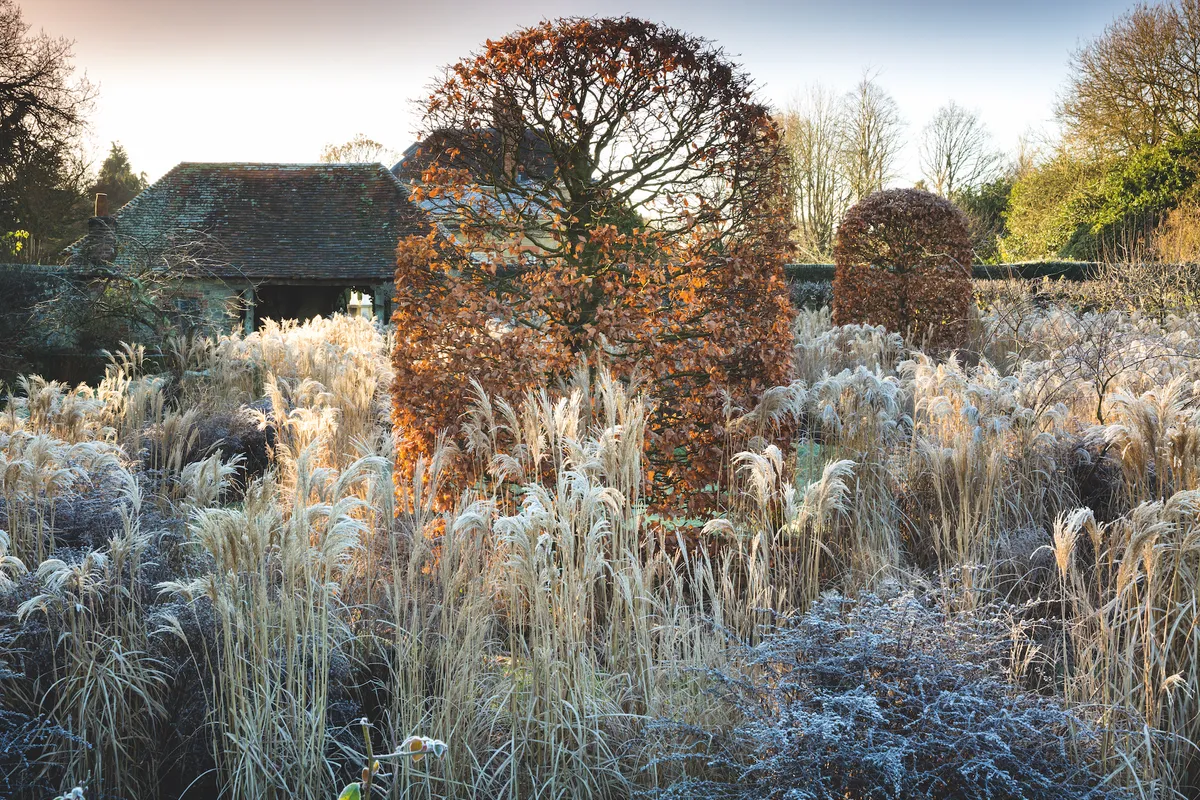
The fluffy white heads of Miscanthus sinensis 'Kleine Fontäne', 'Malepartus' and 'Gracillimus' and clipped beech sentries hide a sunken lawn that is reached by a spiralling path.
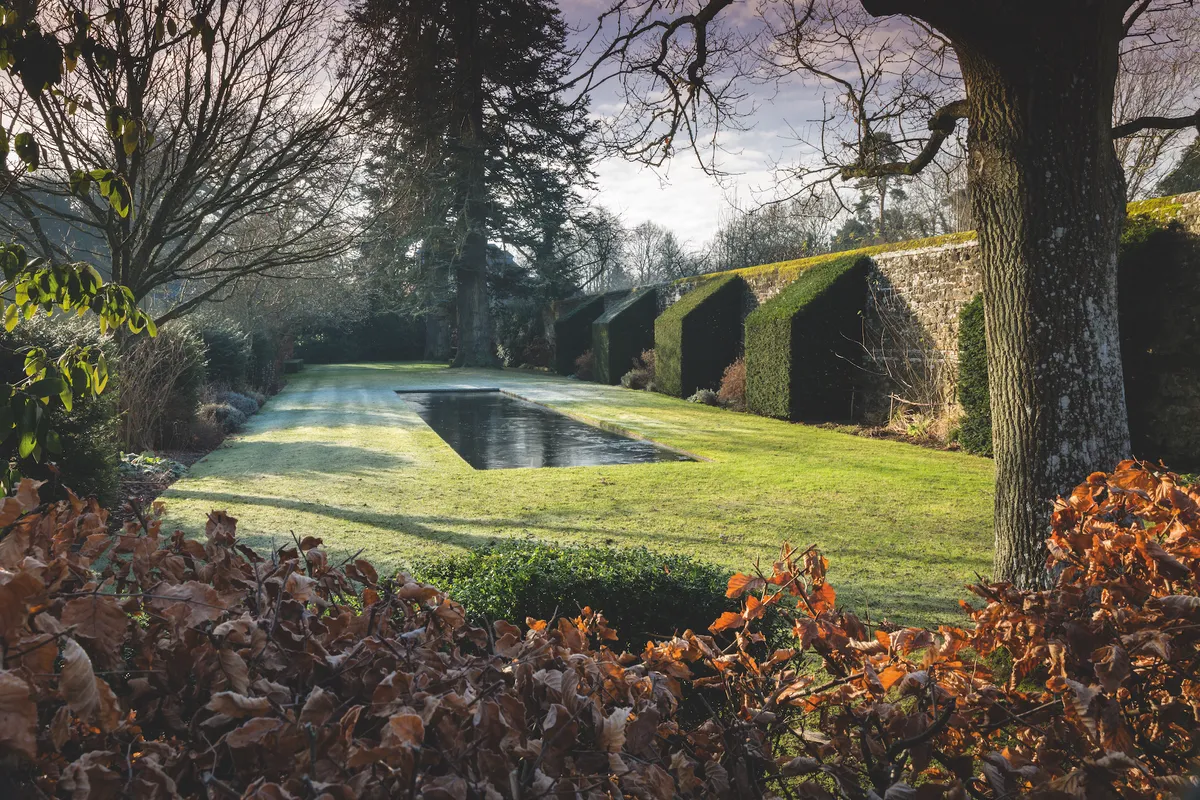
The interplay of light and shadow is a particular pleasure in this area outside the walls, where head gardener Ben Pope has designed a rectangular mirror pool overlooked by neat yew buttresses.
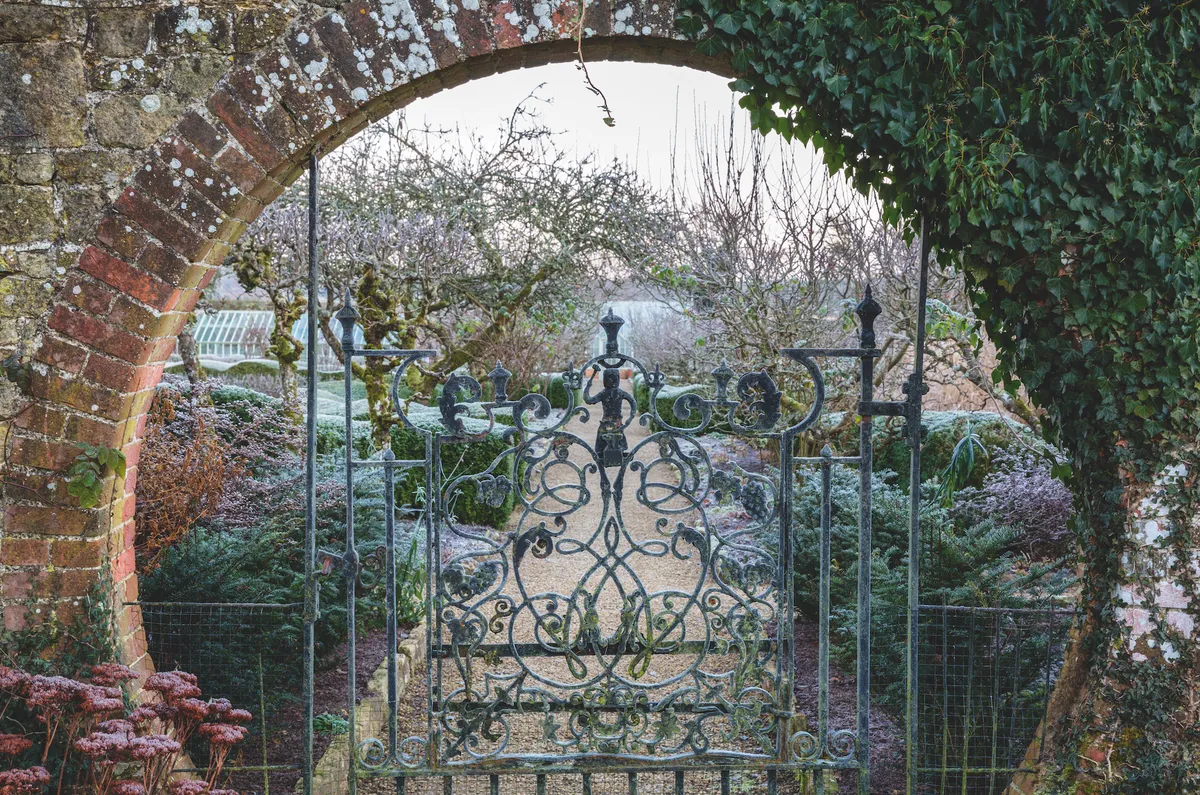
An elaborate and whimsical metalwork gate was added in the 1930s. Set within an ivy-and-lichen covered moon gateway, it acts as a perfect precursor to the combination of traditional and contemporary planting within the walled garden.
Garden design for winter
Head gardener Ben Pope has worked in partnership with designer Arne Maynard and introduced many innovations of his own to this garden. Here he offers five tips to make the most of a winter garden.
Consider paths
• The layout of the garden and its paths can have as much visual interest as topiary and hedges. Straight lines encourage the eye to move quickly, while curves are more gentle and leisurely. Sharp corners attract attention and can act as visual resting places.
Make the most of low winter sun
• In low, winter sun you can engineer dramatic effects that exploit the bright highlights and long shadows of trees, topiary and garden structure.
Repeat shapes and materials
• Repetition is a useful tool. Repeating various shapes, surfaces and materials around the garden will encourage the eye to link different spaces together, reinforcing the underlying sense of movement and interest.
Add contrasting textures
• Contrast textures in your planting as much as your hard landscaping. For example, the bones of miscanthus and sedums work particularly well when sited close to the smooth surfaces of well-clipped topiary and hedges.
Create vistas
• Vistas are key. In winter there is far less to distract the viewer, which helps to increase the visual impact of a well-crafted vista.
You can follow Ben Pope's gardening activities at theworkinggarden.com.